#sanskrit literature
Explore tagged Tumblr posts
Text
Hemanta Hiccups
The Cozy Chaos of Winter Ah, Hemanta—the Sanskrit name for winter, a season that feels like a The Warm Embrace of Hemanta: A Winter’s Tale Winter, or Hemanta as it is called in Sanskrit, has always held a special place in my heart. It is a season of mystery and solitude, a time when the world seems to pause and unveil its quiet secrets. The Sanskrit poet’s vivid description of this season…
#blogchatter bloghop#Hemanta chronicle#MeThinks...ReThinks#sanskrit literature#seasonal reflections#winter vibes
0 notes
Text
Ramayana No. 18: The Curious Case of Rama Hearing His Own Story: Reflections on the Ramayana
Inspired by Chapter 1.4 of the DeBroy Translation of the Ramayana When reading ancient texts, one often encounters moments that seem to defy the logic of modern storytelling. One such moment came to me while reading Chapter 1.4 of Bibek Debroy’s translation of Valmiki’s Ramayana. In this passage, something quite strange happens: Rama, the hero of the Ramayana, listens to the story of his own…
#ancient Indian texts#Bibek Debroy Ramayana#Debroy translation#dharma in Ramayana#divine destiny Ramayana#Hindu epics#Hindu Philosophy#Hindu teachings#Indian mythology#Indian philosophy#Indian spiritual texts#Kusha and Lava#Kusha and Lava story#meta-narrative Ramayana#oral storytelling#Rama and Sita#Rama listening to Ramayana#Ramayana#Ramayana Chapter 1.4#Ramayana reflection#sacred epics#Sanskrit literature#spiritual lessons from Ramayana#storytelling in epics#Valmiki#Valmiki Ramayana
1 note
·
View note
Text
Venerating Jayadeva's Gita Govinda: Its Enduring Impact on Odia Culture and Arts #BlogchatterA2Z
Venerating Jayadeva's Gita Govinda: Its Enduring Impact on Odia Culture and Arts #BlogchatterA2Z #GitaGovinda #Jayadeva #OdiaCulture #OdissiDance #BhaktiMovement #SanskritLiterature #OdishaFestivals #JagannathTemple #IndianClassicalArts #SpiritualOdisha
Illuminating the Divine: The Profound Impact of Jayadeva’s ‘Gita Govinda’ on Odia Culture Introduction:Jayadeva’s ‘Gita Govinda’ is not just a literary masterpiece but a cornerstone of Odia culture and spirituality. Composed in the 12th century by the saint-poet Jayadeva, this Sanskrit text is a lyrical fusion of profound spirituality and sublime poetry. It celebrates the divine love of Krishna…
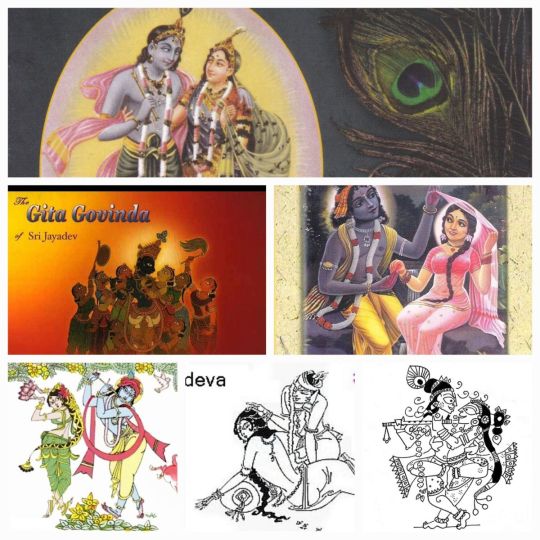
View On WordPress
#Bhakti movement#Gita Govinda#Indian classical arts#Jagannath Temple#Jayadeva#Odia Culture#Odia music#Odissi dance#Religious practices in Odisha#Sanskrit literature
0 notes
Text
Observing World Sanskrit Day: Protecting an Old Legacy
World Sanskrit Day is a valued event that resounds with the reverberations of an old phonetic fortune – the Sanskrit language. This day respects the rich legacy, significant insight, and social importance epitomized inside the Sanskrit script. In this far reaching article, we plunge profound into the meaning of World Sanskrit Day, its verifiable roots, the immortal significance of Sanskrit, its…

View On WordPress
#Ancient scripts#Cultural significance#Language preservation#Linguistic heritage#Sanskrit language#Sanskrit literature#Vedic traditions
0 notes
Text
About Vedic Scriptures
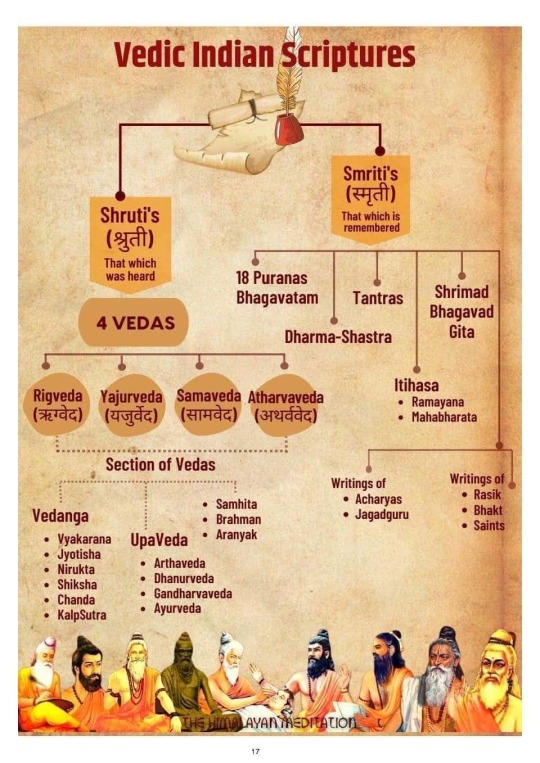


#vedic literature#hinduism#hindublr#sanatan dharma#ancient india#vedic culture#mantra#bharat#ancient indian history#puranas#sanskrit#languages#krishna#dharma#karma#hindu culture
306 notes
·
View notes
Text
Random art/history/spirituality/pop culture thread.
Finished a rewatch recently of A:TLA and Korra as well.
Avatar itself is a South Asian concept that in Sanskrit means Descent, as in descended from - signifying the incarnation/material appearance of a powerful deity or spirit.
Aang and Korra are literally that - the new incarnations of a long tradition of the Avatar being reborn to save/aid/guide a world.
The concept under the name, Avatar, didn't exist in Vedic literature, though, but post-Vedic (again by name, reincarnation and the meaning/point/mythic use did exist, as did a doctrine about the idea of avatars, but again, not the term used as such in some of the original texts).
Instead, terms like "from/of divine descent" - 19th century rising Western interest in Hinduism at the time led to Avatar being yoinked as a loanword to English. But what else?
Well, specifically in the rewatch, something I thought was rather sweet: The mention of Guru Laghima.
This happens in Korra where one of the villains (I shouldn't say no spoilers so far long after the show's ended but...polite?) when a big villain reveals their interest in the writings of this Guru and...it leads to this villain being able to fly.
Well, let's look into Laghima.
Now, there was no Guru Laghima in real life, obviously. But the last name here? It's really a word -- a concept.
Oooooo. A reference.
So, what is Laghima?
In a nutshell. "Lightness." It is "The Absence of Weight."
It is one of the 8 major Siddhis - the spiritual or supernatural abilities achieved by those who've reached the heights of spiritual mastery/divine arts, ascetism/ascetic arts.
If one mastered Laghima one in theory could attain a level of lightness so light in fact, you are truly weightless and can fly.
Don't recommend trying this. But, it was just something I wanted to nerd out about, share, and the nicety of seeing in a major IP.
It is still weird there's like only one Indian guy in the shows though and he's the "guru" monk in the mountains who shows up for one short tight moment to teach Aang about chakras (which btw...he did a damn good job on that though, real talk).
There's a huge thing with art here where a whole host of South Asian stuff is yoinked/altered/coopted more. And there's like...no south asians behind/with it?
To end on a wholesome positive cooperative and comparative note?
If this feels familiar and you're a martial arts film buff, or read wuxia, well, it's because it might strike similar to the use of "lightness" with Qinggong for martial artists to gain the lightness to leap like they in wuxia flicks. Run on water or up on walls. I might do a detailed thread on the 8 major Siddhis though when my brain is better.
#ATLA#avatar the last airbender#avatar aang#aang and katara#legend of korra#tlok#avatar korra#South Asian#Avatar#Sanskrit#Vedic literature#vedic culture#Hinduism#The west borrowed this#Guru Laghima#Laghima#Siddhis#8 major Siddhis#just thought I'd share#it's neat to me#i think it's neat#martial arts
18 notes
·
View notes
Text


If you are still heart broken about the destruction of the Alexandria library, you will be happy to hear in a far away world, there’s a vast library hidden from the world for centuries, contains 84,000 books, which are planned to be digitised, translated and share with the world.
The Sakya Monastery in Tibet, founded in 1073 by Khon Konchog Gyalpo, is renowned for its vast library of ancient manuscripts, many of which remain untouched for centuries.
Most of these texts are Buddhist scriptures, meticulously handwritten in various languages like Chinese, Tibetan, Mongolian, and Sanskrit. But the depth of this collection is vast. It isn’t limited to religious teachings; it expands into the realms of literature, history, philosophy, the stars above with astronomy, the logic of mathematics, the beauty of art, and even the practical wisdom of agriculture.
The scale of this library is staggering. Picture traditional bookshelves stretching 200 feet and soaring to 33 feet, all packed with a whopping 84,000 books! Among these, there’s a standout: a single scripture that tips the scales at a massive 1,100 pounds, claiming the title of the heaviest in the world. Thanks to the region’s dry climate, the library also boasts a collection of delicate palm-leaf manuscripts, preserved in near-perfect condition.
The library is not open to the general public but is accessible to members and visiting scholars with permission. Efforts are underway to digitize these manuscripts, making them more widely available for research and study. This initiative highlights the library's role as a bridge between ancient wisdom and modern scholarship, offering invaluable insights into Tibetan culture and knowledge.
Now, these precious papers give us a peek into Tibet’s history. They show us how people lived, what they believed, and how they dreamed. Thanks to the Sakya Monastery, a whole world has been brought back to life from long ago. Everyone can learn and be amazed by the wonders of the past.
[Sources]:
*Earthly Mission: Tibet's Great Sakya Library (https://earthlymission.com/tibet-great-sakya-library-84000-scrolls-heaviest-scripture-world/)
*History Enhanced: Unveiling the Unseen (https://historyenhanced.com/unveiling-the-unseen-84000-unread-manuscripts-from-sakya-librarys-timeless-tales-discovered/)
*The Historians: The Secrets of Sakya Monastery Library (https://thehistorians.org/2023/12/24/the_secrets_of_sakya_monastery_library_in_tibet/)




#Tibet#Sakya Monastery#Khon Konchog Gyalpo#Ancient manuscripts#Buddhist scriptures#Mongolian#Sanskrit#Chinese#Tibetan#Religious Teachings#Arts#ancient literature#ancient history#ancient philosophy#astronomy#ancient agriculture#ancient wisdom#ancient library#heaviest book in the world
20 notes
·
View notes
Text
अयं निजः परो वेति गणना लघुचेतसाम् उदार चरितानां तु वसुधैव कुटुम्बकम्
ayam nijah paro veti gananā laghuchetasām, udāra charitānām tu vasudhaiva kutumbakam
this is for me and that is for other— such is the thinking of a narrow-minded person, whereas for the noble and broad minded persons, the entire world is one big family. — Maha Upanishad
given above is a subhashita from the Maha Upanishad, one of the Samanya (minor) Upanishads in Hinduism. a subhashita is a genre of Sanskrit epigrammatic poems which preach maxims, aphormisms, lessons and advices or carry a riddle. they are typically composed in four or two padas (lines).
the term 'subhashita' originates from two words: the prefix 'su' which means good, and the word 'bhashita' which roughly translates to 'that what is spoken' in english.
that, my dear reader, is the gyaan of the day
#desi tumblr#desi academia#linguistics#language#sanskrit#classical literature#vedanta#poetry tumblr#desi girl#desi culture#desiblr#quotes#hindu vedas#upanishads
3 notes
·
View notes
Text
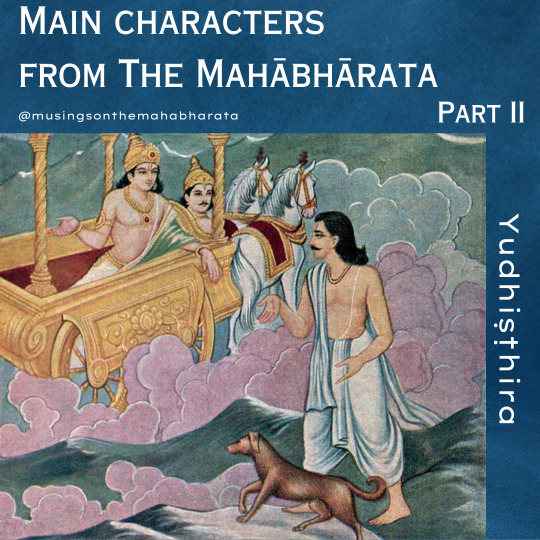
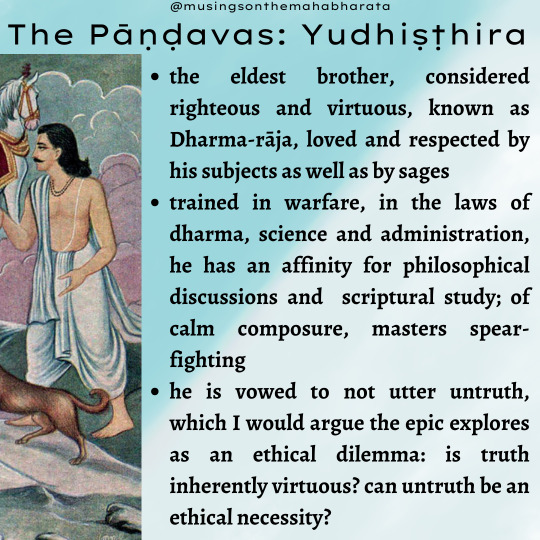

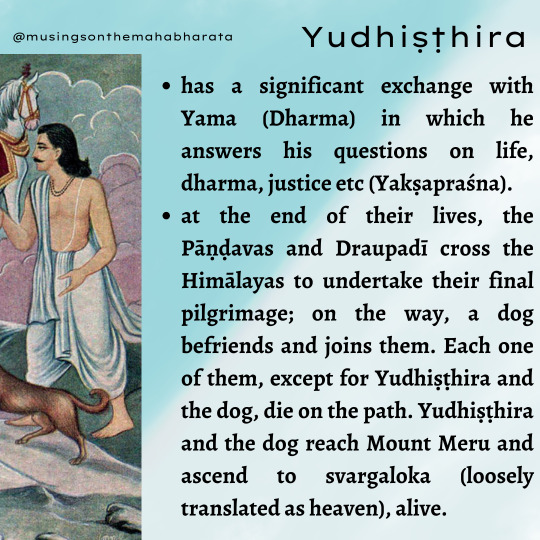
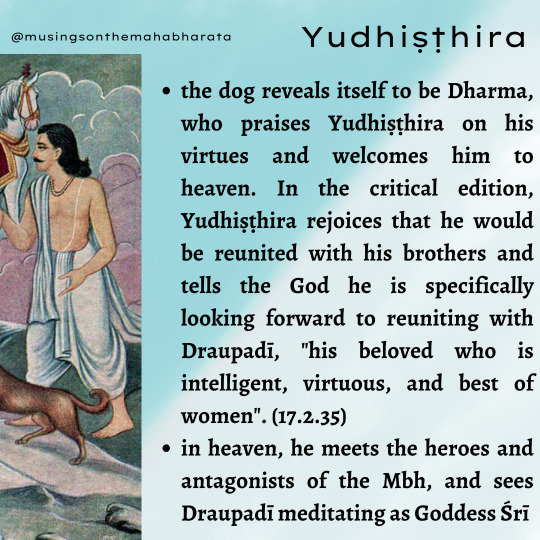
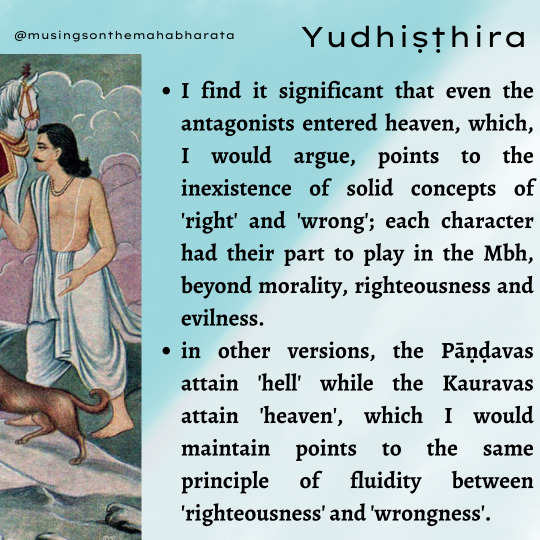
part II of the main characters from the Mbh series: Yudhiṣṭhira! i focused on a few significant themes related to his character which i want to expand on either in my videos or in my papers.
⚜️Yudhiṣṭhira is vowed to not utter untruth, which i would argue the epic explores as an ethical dilemma: is truth inherently virtuous? can untruth be an ethical necessity?
⚜️ Alf Hiltebeitel's take on the fateful dice match being a reflection of cosmological dynamics of cyclical renewal and destruction, connoted with the advent of the Kali yuga prophesised in scenes set in svargaloka with the Goddess Śrī, the principle of fortune and prosperity, who later incarnates as Draupadī, who, in this, becomes the pillar of Yudhiṣṭhira's empire
*Hiltebeitel also explores the game as entity possession (not in the orthodox sense) - more on this later!
book: Hiltebeitel, A. (1990). The Ritual of Battle: Krishna in the Mahābhārata. Albany, United States: State of New York University Press.
⚜️ meeting the Kauravas in heaven; the antagonists entering heaven, i would argue, points to the inexistence of solid concepts of 'right' and 'wrong'; each character had their part to play in the Mbh, beyond morality, righteousness and evilness, which are fluid concepts
⚜️ painting from the illustrated Mbh published by Gorakhpur Geeta Press.
#mahabharata#mahahabharat#mahabharatam#hinduism#spirituality#yudhishthir#yudhisthira#hindu#religion#sanskrit#itihasa#literature#alf hiltebeitel#krishna#scholar#phd#phd life#phd thesis#hindu mythology#draupadi#shri
15 notes
·
View notes
Text
Ramayana No. 11: The Beginning and the End—Understanding the First Canto of the Gita Press Ramayana
As I begin my journey through the Gita Press edition of the Ramayana, I find myself immediately struck by the structure of the first canto. Within just a few verses, the entire epic is laid out before the reader—Rama’s exile, his defeat of Ravana, the rescue of Sita, and his triumphant return to Ayodhya where he reigns as king. It’s a “happily ever after” summary that seems to condense the entire…
#Ancient Texts#Ayodhya#comparative religion#Debroy translation#Dharma#Eastern spirituality.#epic literature#Gita Press#Hindu epics#Hindu Philosophy#Hindu teachings#Indian culture#Indian mythology#Indian spirituality#moral teachings#mythological stories#Narada#Rama#Ramayana#Ravana#religious studies#Sanskrit literature#Sita#spiritual journey#spiritual wisdom#Valmiki Ramayana#Vedic literature
0 notes
Text
Happy Himachal Day!!!
english: we’re not compatible
kullui (pahadi):
𑚁𑚨𑚭𑚤𑚯 𑚙𑚰𑚨𑚭𑚤𑚯 𑚛𑚱𑚤𑚭 𑚞𑚭𑚤𑚭 𑚤𑚯 𑚩𑚰𑚃; 𑚙𑚰𑚨𑚭 𑚥𑚴𑚪𑚯 𑚠𑚭𑚌𑚭 𑚤𑚭 𑚡𑚄𑚫𑚤, 𑚁𑚨𑚭 𑚥𑚴𑚪𑚯 𑚙𑚭𑚥𑚤𑚱 𑚤𑚯 𑚊𑚰𑚩𑚯।
[translation: your way and my way are far apart;
you want the garden’s flower, while i seek the wild white rose. ]
[transliteration: aasari-tusari doora-paara ri hoi; tusa lorhi baga ra bhaunr, aasa lorhi talru ri kuhi.
/ आसारी-तुसारी दुरा-पारा री हुई; तुसा लोड़ी बागा रा भउंर, आसा लोड़ी तालरू री कुही। ]

#couplet#poetry#himachal#pahadiblr#desiblr#india#flowers#poems and poetry#culture#old#love#rejection#himachal day#15 April#literature#sanskrit#prakrit#indian languages
5 notes
·
View notes
Text

Reflections of slander burn in all eyes – how painful it is!
12 notes
·
View notes
Text
Here's a cool story about an Englishman named Jim Mallinson. He's a professor of Sanskrit at Oxford and was one of the first western people to officially receive the title of 'Mahant' meaning 'learned man' at a congregation of Brahmins (Hindu priests) in Varanasi (a Hindu holy city).
Basically, dude really knows his Sanskrit.
He's also like 6'2" and has long dreadlocks. This will matter in the story.
So, Prof. Mallinson was in rural Karnataka (the Indian state that the city of Bangalore is in) and was hang gliding when some turbulent winds blew him far away from where he was supposed to land.
He landed safely but in a village in the middle of nowhere. He tried to communicate with the villagers, but none of them could speak English.
So, he made his way to the village's Hindu temple where he found the priest. He then started speaking to the priest in Sanskrit, asking for directions and if he could borrow some money to get back to his friends.
Imagine you're the priest of this temple. You're minding your own business when a white guy with dreadlocks lands up falling out of the sky and then starts speaking your holy language only to ask you where's the nearest bus stop and if he can borrow a hundred rupees.
#india#incredibleindia#short story#story time#sanskrit#language#btw if you even care#i heard this story from the man himself at a party at a literature festival
3 notes
·
View notes
Text
Ramayan in one picture 🚩

#ramayan#hindublr#hinduism#jai shree ram#sita ram#hanuman ji#ayodhya#ravana#sanskrit#vedic literature#valmiki ramayan
135 notes
·
View notes
Text


Parallels
Or
Seeing Patterns in Things That Aren’t There
Part 51.
He Couldn’t see the Forest for the Trees
Also known as
The Felling of the Trees
Or
The Trees Strike Back
1. “Of course, it is likely enough, my friends,' he said slowly, 'likely enough that we are going to our doom: the last march of the Ents. But if we stayed home and did nothing, doom would find us anyway, sooner or later.” - Treebeard
- The Lord of the Rings: The Two Towers (1954).
J. R. R. Tolkien.
(Art by Matt Ferguson)
(I was going to use some screenshots from the film adaptation but I couldn’t find any in good enough quality)
Kind of speaks for itself.
Treebeard and the Ents awaken from their long sleep with Merry and Pippin at their side to see the forest of Fangorn being razed by Saruman’s army of orcs and Uruk-Hai to fuel his war machine.
And after much deliberation, as his forces are away attacking Helm’s Deep, Treebeard and the Ents decide to launch an attack on Isengard when Saruman least expects it.
Kicking his ass and razing his infernal war factory to the ground in the process.
2. “Alder, pre-eminent in lineage, attacked in the beginning;
Willow and rowan were late to the army;
Thorny plum was greedy for slaughter
...
Fir trees to the fore, ruler in battles;
Ash performed excellently before monarchs;
Elm because of its ferocity did not budge a foot:
it would strike in the middle, on the flanks, and in the end.
...
Swift and mighty oak: before him trembled heaven and earth;
Fierce enemy of warriors, his name in wax tablets.'”
etc.
- Cad Goddeu (The Battle of the Trees). 14th Century. Attributed to Taliesin.
(From the Book of Taliesin. A 14th century manuscript containing a collection of poems in Middle Welsh. A folio of which is depicted above)
(Passages from this poem were also translated into Sanskrit and used by John Williams for the Duel of the Fates in his score to the Star Wars prequels)
Kind of speaks for itself.
One cannot help but wonder.
Given Tolkien’s fondness for Celtic mythology and his love of the Welsh language, did he perhaps know of the Cad Goddeu and/or the Book of Taliesin, and could it have inspired the creation of the Ents and their role in The Lord of the Rings?
(Although the circumstances are a bit different. The Ents were always fully sentient beings, while the trees in the Cad Goddeu are enchanted by Gwydion.)
Now it is known that their actions were also his means of throwing shade at William Shakespeare due to his personal disappointment concerning a similar scene in Macbeth but more cannot be said of such matters beyond this.
Regardless, I felt that it was worth pointing out.
Make of this what you will.
#dougie rambles#personal stuff#parallels#my poor attempt at a joke#or is it#jrr tolkien#middle earth#lotr#the lord of the rings#ents#trees#treebeard#wales#welsh language#cymru#cymraeg#celtic languages#language revitalization#language revival#poetry#medieval poetry#cad goddeu#Taliesin#make of this what you will#literature#macbeth#sanskrit#tangentially#fangorn forest#isengard
1 note
·
View note
Text
Fairy Tale - short story usually that is part of folklore/folktales . But did you know the most famous take of them, the German tales we've all come to hear & love, aren't exactly fairy tales? But really, they're considered "Wonder tales" or, tales of wonder.
Among the oldest that we can trace are some that come from South Asia and the Middle East, the exact origin/time frame is unknown as they have a history of existing first as oral tales in verse/poetic form that were later written down, then translated again into prose.
But the point of these folk tales were to elicit a sense of wonder - that they did!
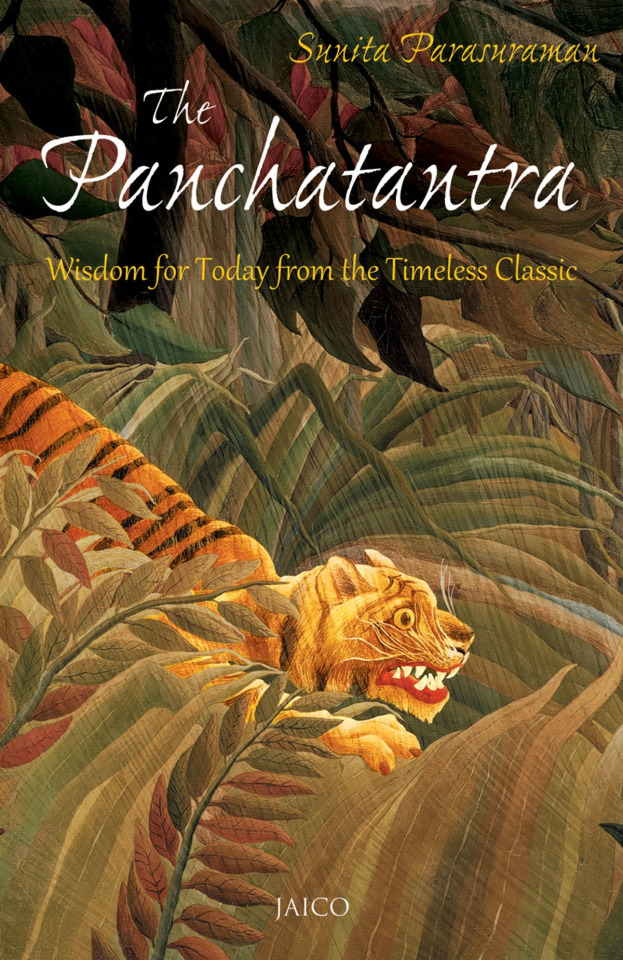
The Panchatantra is an ancient collection of interrelated animal fables written in Sanskrit. It varies from story to story in prose format as well as verse all within a frame story.
The earliest known translation of it in a Non Indian language dates to 550 CE and is translated into Middle Persian.
Many of the fables within also share and discuss life lessons, morality, and things to contemplate beyond the wondrous stories themselves.
There are lessons to take away, as well as, for those interested in shared/comparative mythology/storytelling, beats and similar tropes/takes of tales you might recognize 🤔
Some examples can be the snake and the mongoose story, which later likely served as inspiration for Rudyard Kipling's Rikki-Tikki-Tavi.
And while considering the history and travel/trade of stories and their evolution (something Tales of Tremaine is about), here's something to consider:
"Sanskrit literature is very rich in fables and stories; no other literature can vie with it in that respect; nay, it is extremely likely that fables, in particular animal fables, had their principal source in India." — Max Muller, On the Migration of Fables
Now, something ELSE you MUST take into account in this is how stories travel and originate. Most are for a mix of reasons, and you can't take out PIE (proto indo european) influences, then the silk road/trade migration, as well as storytelling structures once taught take on their own lives. Every culture has animals, so the motifs, tropes, beats, are going to be taken and then reapplied to a local culture.
Many scholars have noted and commented on the strong similarity between some of the stories in the Panchatantra and Aesop's Fables. And so the Panchatantra has come to be held by many as the source or most prominent source of many of the fairy/wonder tales content/structure/shape we've come to know today.
Vijay Bedekar in the History of the Migration of the Panchatantra has noted that origin of several of the stories in Arabian Nights, Sinbad, and 30-50% of western nursery rhymes and ballads have their origins in the Panchatantra as well as the Jataka tales (another collection of folk stories, about Buddha and many lives/forms/incarnations.
Many Jatakas are told with a common threefold plot schema which contains a “narrative in the present” | paccupannavatthu |, with the Buddha and other figures, a “narrative in the past” |atītavatthu|, a story from a past life of the Buddha, a "link" |samodhāna| in which there is an “identification of the past protagonists with the present ones.
If that seems familiar, it's because you'll see this sort of played out as well in Tales of Tremaine through items/characters - timeline.
But, how did this come to travel so far and wide? Wheeeeellllllllllllllll. Do you remember Nalanda, and how far it drew students from as the oldest residential university, catering to students interested from afar most especially in Buddhism?
Whaaaaale. That's how. The records we have indicate that Buddhist monks traveling along brought copies of the texts, along with other Sanskrit texts to: Tibet, China, Mongolia, and all throughout South East Asia where Buddhism can be found.
One of the earliest stories of panaceas and life saving magical herbs spread from South Asian stories. One early record of this which has now become a trope is found in the 10 century in where a Persian physician read about an herb that could restore a dead man to life and wished to find it with his king's blessing.
Narrator: He did not find the herb.
Anyways, after spreading to the Middle East, the Arabic translation of this collection was later translated to Greek then Spanish - old Castilian, and then into Hebrew by Rabbi Joel in the 12th century. Then Latin.
Anyways, Forest Gump voice: that's all i have to say about that (not really but for now).
#folktale#folklore#folktales#German tales#fairy tales#fairy tale retelling#animal fables#fables#translation#translated literature#lore#magic#buddhism#arabian nights#sinbad#panchatantratales#panchatantra#aesops fables#sanskrit#literature#literary history#literary analysis#r.r. virdi#rrvidri#Persia#asia#middle east#rikki tikki tavi#rudyard kipling
4 notes
·
View notes